Crib Safety and Creating a Safe Sleep Environment for Baby
There are so many cute nursery items available for babies today, but when it comes to cribs, it’s not about looks. It’s all about crib safety and creating a safe sleep environment. Before you buy, it’s important to do your research and talk to our Plano pediatricians about what to look for in a crib. Now is not the time to listen to family and friends, or get sentimental about an antique crib or bassinet that’s been in the family for years.
Creating a safe sleep environment for your baby
It’s critical to follow these guidelines when you are selecting a crib. Following these practices for infants under a year of age helps prevent suffocation and reduce the risk of sudden infant death syndrome, or SIDS.
- The mattress needs to be very firm, with no sagging or lumpiness. It should fit very snugly into the crib.
- Bars of the crib need to be 2 3/8 inches apart or less.
- Choose solid headboard and footboard designs, with no decorative cutouts or embellishments.
- If the crib is painted, make sure it is painted with nontoxic paint.
- When the mattress is in its lowest position, the crib’s raised sides need to be at least 26 inches above the mattress. You need to lower the mattress as your baby grows and begins to stand.
- Never use cribs with drop rails.
The Consumer Product Safety Commission website, CPSC.gov, is a good resource where you can check crib safety guidelines, check for recalled products and more. Also, talk to our Plano pediatricians if you have questions about the crib you are considering.
Letting go of unsafe ideas about baby’s sleep spaces
You or your family may have ideas about what a baby’s crib should look like, but you may need to let go of certain “adorable” décor ideas and other things that could harm your baby. Here are some things to avoid that are unsafe for infant sleeping.
- Crib bumpers, as well as pillows, blankets or comforters in the crib
- Water beds
- Sheepskins
- Any soft surfaces, such as sofas, pillows, etc.
- Stuffed animals in the crib
- Toys in the crib
- Rolled devices or blankets to keep babies on their backs
- Blinds with strings or curtains near the crib
The American Academy of Pediatrics also advises you not to share your bed with your baby. You can share your room with your baby and keep him or her in a safe crib nearby.
Crib safety away from home
All the rules for creating a safe sleep environment apply when you travel. The only thing that should be in the baby’s sleep space is the baby and a tight-fitting sheet over the mattress. Don’t leave your baby in a car seat or swing to sleep, and don’t share a bed. Check to see if your travel bed is safe by going to the CPSC website.
Our Plano pediatricians are here to help you keep your baby safe while sleeping and awake
Keeping your baby safe is our mission. Talk to our physicians and staff about crib safety. Contact us to make an appointment.

